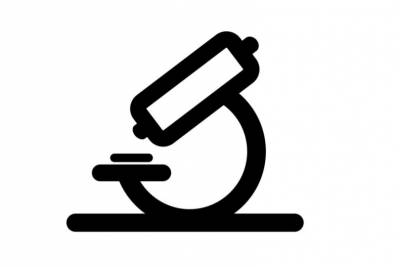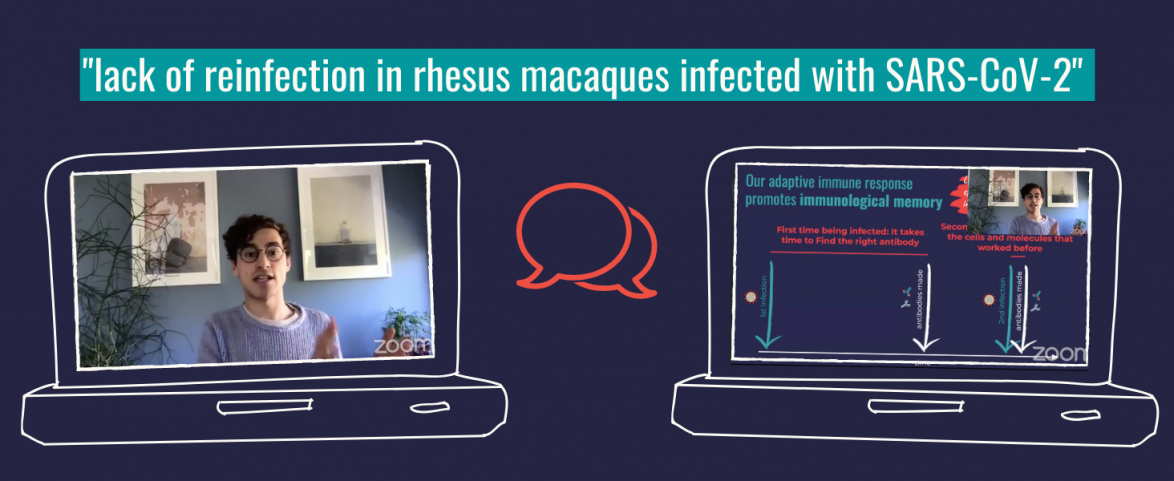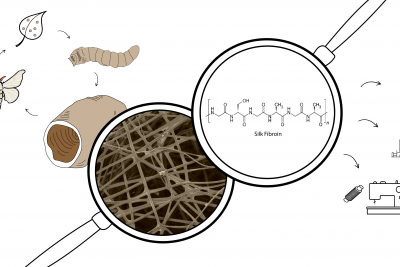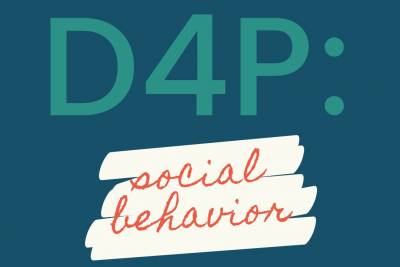Exploring the Possibilities of Reinfection
Since COVID-19 is a new disease for humans, researchers are still learning about the possibilities of contracting the disease more than once. However, understanding how SARS-CoV-2 — the virus that causes COVID-19 — affects our immune system is critical for establishing policies around social mixing. While many researchers are still in the early stages of scientific discovery around COVID-19, there are some clues to suggest that we can develop immunological memory. Our D4P Fellow, Joe Levin, presents data from one of these studies, highlighting both the research process, and possible future directions.
Materials

Experimental Evaluation
using empirical investigation to establish patterns, test for true differences, or test hypothetical models
What you need to know:
COVID-19 is reshaping our lives. The way in which humanity moves forward from this period of time will be dictated, at least in part, by knowing what the possibilities are for reinfection. However, there are several challenges in designing experiments to answer our questions around reinfection, first and foremost being time. COVID-19 is a new human disease, having only emerged in November 2019. The recency of this disease in humans makes it impossible to know how a person who has recovered from COVID-19 would respond to reinfection one or more years down the road. While studies on the 2003 SARS outbreak or the 2010 MERS outbreak suggests immunity can last for 1-3+ years, only time will tell for COVID-19.
Another significant challenge lies around building the experimental system, i.e. the organism and strategies for carrying out a research project. The ethics of clinical research (experiments using humans) rightly creates many barriers for carrying out experiments that can cause harm to humans. COVID-19 can be fatal, and it is unethical to conduct a study that puts the SARS-CoV-2 virus into people. Given the impact that this disease has on society, “waiting it out” is not a reasonable option. Yet, the human immune system is incredibly complex, and studies around reinfection are only valuable if performed in a system that most resembles humans. As such, the authors of this study established an experimental system using primates, specifically rhesus macaques.
Primate research, however, is not without its own ethical landscape, which in the US is governed by the Institutional Animal Care and Use Committee (IACUC). All countries have a version of IACUC, and researchers are expected to adhere to stringent guidelines around the welfare of laboratory animals at all times. Maintaining primates in a laboratory setting is expensive — financially and emotionally — and the number of primate subjects to be used over the course of a study must be kept at a minimum. For these reasons, only a small number of rhesus macaques were used in these experiments.
As can be gleaned from our current pandemic status, this study was carried out in a context full of challenges, but the results have positive implications for humans, at least on the short-term.
The following are the key terms defined in this D4P presentation, and are important for understanding the data presented.
Immunological Memory
In broad strokes, we can categorize the human immune response into two types — innate immunity and adaptive immunity. Innate immunity describes an immediate, general response to infection by a pathogen, and involves barriers such as our skin and mucous membranes. On the other hand, a highly specific response to a particular pathogen, such as SARS-CoV-2, is mediated by our adaptive immune response. Adaptive immunity involves the production of specialized immune cells and molecules (antibodies) that keep a pathogen in their “memory,” and can respond quickly if they “see” the pathogen in our bodies. Our ability to recognize and respond to reinfection with a specific pathogen is called “immunological memory.”
It is worth noting that humans are really good at creating immunological memories for some pathogens, and not so good for others. For example, we have excellent immunological memory for the measles (the MMR vaccine, given in early life, protects us from the disease for at least 100 years). However, we do not have very good immunological memory against the variety of pathogens that cause the common cold. The purpose of this paper is to put SARS-CoV-2 in the context of immunological memory, as a means to start understanding what the landscape will be for humans on the long-term.
The Three R’s
Humanity greatly benefits from innovations in biomedical research through the use of therapeutics, devices, and techniques. Many of these scientific innovations are made possible through the use of laboratory animals. National and international guidelines remain in place to ensure that researchers are implementing ethical standards when using animal models. Much of this is guided by the “Three R’s:” reduce the number of animals used; refine experiments to maximize animal well-being and minimize discomfort; and replace animals with cell models, or try to choose “lower” model systems whenever possible.
Immunopathology and Immunohistochemistry
In science, it is often helpful to break down words to reveal their meaning. The prefix “immuno” refers to the immune system and/or processes within a living system. “Pathology” is the study of disease, and can include the causes and effects of disease, such as disease-related injury. Perhaps less recognizable is the word “Histochemistry,” which refers to the chemistry of living tissue, and involves stains, indicators, and microscopes.
Putting this all together: Immunopathology is a branch of medicine that specifically focuses on the immune system in response to disease. Immunohistochemistry is a scientific technique that explores the chemistry of our tissues using tagged-antibodies that can bind to an antigen found in the tissue.
The authors of this study used immunopathology to examine the lung tissue of rhesus macaques before, during, and after infection with SARS-CoV-2, to see if there were structural variations in lungs as a result of infection. The researchers in this study also looked for the presence of SARS-CoV-2 proteins (antigens) in lung tissues of rhesus macaques before, during, and after infection with SARS-CoV-2 using immunohistochemistry. For these experiments, researchers added a tagged antibody, specific to the SARS-CoV-2 spike protein (the tag on the antibody allows scientists to “view” the reaction).
Neutralizing Antibodies
Neutralizing antibodies are produced by specialized cells in our immune system, called B cells, after these cells encounter a new pathogen. They function by sticking to a molecule, often a protein, found on the surface of a pathogen that infects us. By sticking to the pathogen, the neutralizing antibody disrupts the normal biological activity of the pathogen, and helps keep us from getting sick. Neutralizing antibodies are major players in immunological memory.
About our D4P Fellow
Joe Levin (he/his), Graduate Student @ Rockefeller University
Joe is a PhD student at The Rockefeller University in the Laboratory of Structural Biophysics and Mechanobiology. In his free time, Joe enjoys exploring the New York City food and drink scene, and loves backpacking off-the-grid! Eventually, Joe hopes to traverse the Appalachian Trail. You can learn more about Joe through our Scientists of NY series on the RockEDU blog, The Incubator










